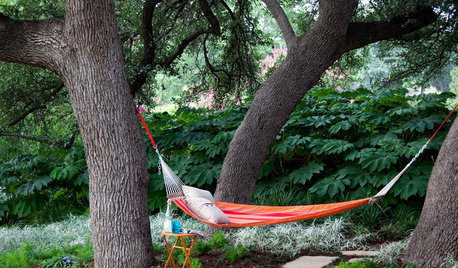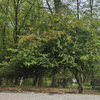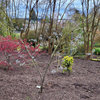What trees AREN'T plagued by disease?
edlincoln
8 years ago
Featured Answer
Sort by:Oldest
Comments (34)
Huggorm
8 years agojdo053103
8 years agoRelated Discussions
Why aren't you interested in protected fruit culture?
Comments (27)Fruitnut: I applaud your efforts, at worst you may be eccentric, who cares, at best, ahead of the curve. All of us should be aiming for what works best in our area as you well know. Speaking from experience, greenhouse and high tunnel culture are worlds vastly apart from outdoor culture, each have their own set of challenges and benefits. Probably the biggest set of challenges, depending on the regional climate, for the beginner is the relative lack of information on growing under cover when it comes to fruits. Being an atypical beginner to outdoor fruit culture, it is wonderful to have access to so much information ranging from published refereed journal research to gardening magazine articles. Though the learning curve is steep, at least there are many good footholds to use to climb the hill and many hands held out to help. I suspect trying to find labeled pesticides for fruit crops under plastic is pretty challenging also. Just curious what your water quality is like and soils as the 2 can lead to problems with salt accumulations over time depending on the water quality, soil type and irrigation practices. Like many, our little postage stamp sized horticultural enterprise could definitely use more land, there is none available. Both my wife and I would love to put up a high tunnel for extended vegetable production but we lack the means. It is quite unfortunate as I easily have the expertise to erect and maintain a high tunnel and farm under plastic. I just remembered a benefit you may not have ever mentioned to growing under plastic, you don't have to wear sunscreen to avoid sunburn! Darned it, now I really wish I had a high tunnel!...See MoreWhy aren't my crepe myrtles blooming?
Comments (3)Are they getting more shade from trees nearby growing taller? Do you, or your neighbor, fertilize your lawns(s)? Most lawn fertilizer is high in Nitrogen, and will push leaves instead of flowers. Aside from those two probable causes, I can't think of another right now. You can TRY to fertilize with a fertilizer for flowering plants, with a low N (first) number, but if they are getting too much shade, there's not a whole lot that will do to help. While CMs do OK with little or no water, especially older ones, they do better with water, so maybe getting supplemental water to them might help. Of course, if you are under water restrictions, that's no use.......See MoreWhat plants usually aren't "Seeded"?
Comments (8)Okay, just be aware going in that odds are what you get out in the end likely will not be as good as what you got the seeds from. They will likely be close, and there is a chance you'll get a new plant that is better than the old. But like Flora said, these things are usually reproduced through vegetative cloning (aka regrowing an entire plant from a part of the existing plant, like using small potatoes as seed potatoes as opposed to using actual seeds) for a reason. They just are not "stable" enough to consistently produce quality offspring....See MoreMy sad tree stories & diseased? roots left behind
Comments (12)Yeah, I guess it stunk, not like sewage but rather like rotting wood/leaves. I’d say damage occurred over many, many years. But you know, I had a 10 YO tree ( Chinkapin oak, I think) that was gorgeous and two weeks after H Harvey, pow! It turned black. I have been in denial b/c I couldn’t believe a perfectly healthy tree died just like that. I refused to cut it last fall, thinking it was stressed and would recover. Nope. It’s deader than a door nail. And it is at the very front of my house, No less. as to your tree, it could have been borers and then when tree was weakened enough, parasitic mushrooms took over. While you were looking at borers I was looking up mushrooms, Ha. I can tell you that on the trees I have lost in the past 5 years, they all had mushrooms at the base. I just didn’t think much about it. But these days, if I notice mushrooms along with constantly falling branches, it goes in the “to be cut ASAP” list....See Morewisconsitom
8 years agohamburglar1
8 years agolast modified: 8 years agoedlincoln
8 years agolast modified: 8 years agohairmetal4ever
8 years agoToronado3800 Zone 6 St Louis
8 years agoparker25mv
8 years agolast modified: 8 years agoedlincoln
8 years agoMike McGarvey
8 years agoparker25mv
8 years agoedlincoln
8 years agolast modified: 8 years agotete_a_tete
8 years agogyr_falcon
8 years agoUser
8 years agoakamainegrower
8 years agowisconsitom
8 years agohairmetal4ever
8 years agogardengal48 (PNW Z8/9)
8 years agowisconsitom
8 years agolast modified: 8 years agoakamainegrower
8 years agowisconsitom
8 years agoedlincoln
8 years agoparker25mv
8 years agowisconsitom
8 years agoedlincoln
8 years agoUser
8 years agoparker25mv
8 years agolast modified: 8 years agoakamainegrower
8 years agoparker25mv
8 years agolast modified: 8 years agowisconsitom
8 years agoedlincoln
8 years agowisconsitom
8 years ago
Related Stories

GARDENING GUIDESTree Care: Common Tree Diseases and What to Do About Them
Learn to recognize trees that may be affected by diseases or pests so you can quickly take action
Full Story
TREES7 Deer-Resistant Flowering Trees to Plant this Fall
If you live in a neighborhood with roaming deer, consider these beautiful trees that won't tempt hungry guests
Full Story
EDIBLE GARDENSHow to Grow 10 Favorite Fruit Trees at Home
Plant a mini orchard in fall, winter or early spring to enjoy fresh-off-the-tree fruit the following year
Full Story
DECLUTTERINGDecluttering — Don't Let Fear Hold You Back
Sure, you might make a mistake when tackling a decluttering project, but that's OK. Here's why
Full Story
EDIBLE GARDENSHow to Add an Apple Tree to Your Edible Garden
Readily available, beautiful and fragrant, apple trees offer four-season interest along with crisp, juicy fruit
Full Story
FARM YOUR YARDIf You Have Room for Only One Fruit Tree ...
Juice up a small garden with one of these easier-care or worth-the-effort fruit trees for a mild climate
Full Story
FRUIT TREESHow to Grow Your Own Persimmons
Sturdy and easy to care for, these trees offer bright fruit through winter — and keeping them in bounds is no sweat
Full Story
ARBOR DAY8 Reasons to Plant a Great Tree
Beauty is its own reward, but the benefits of planting the right tree in the right place go way beyond looks
Full Story
FALL GARDENING11 Trees for Brilliant Fall Color
Give your landscape the quintessential look of autumn with the red, orange and yellow leaves of these standouts
Full Story
GARDENING GUIDES8 Essential Native Shade Trees for the U.S. Southeast
These beauties provide cool shade in the summer and easily withstand the heat and humidity of the South
Full Story






cakbu z9 CA